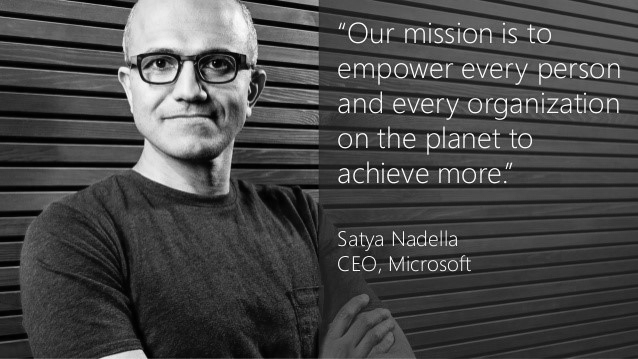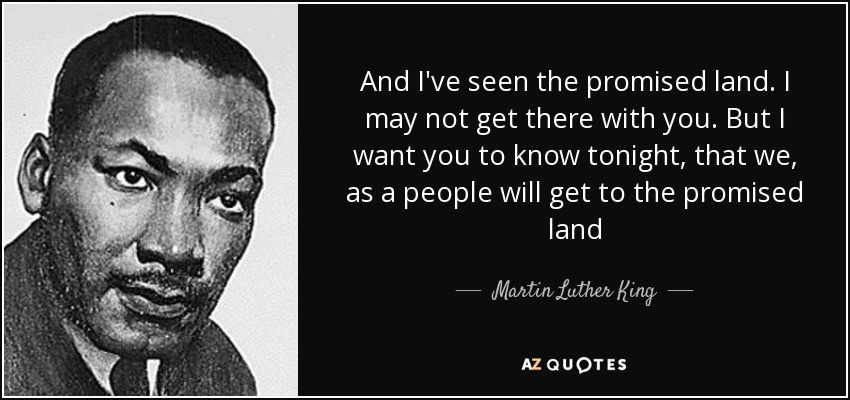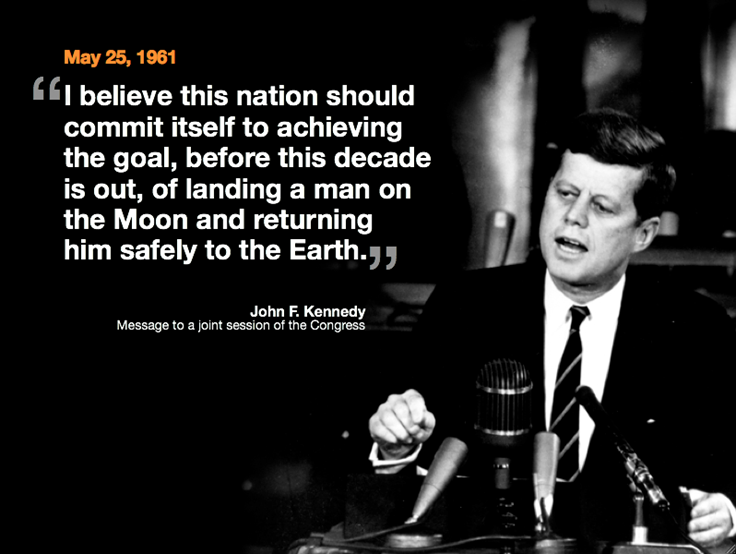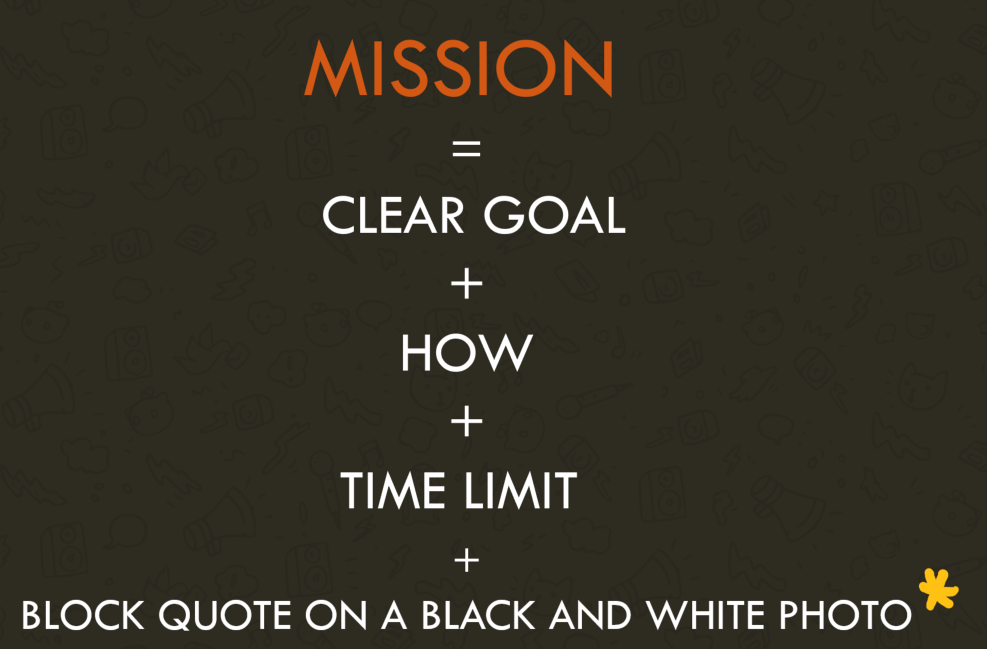Write Useful Mission Statements in 3 Easy Steps
How To:
The simple of idea of putting a mission statement together for the team makes most managers tremble in fear. It’s a sad situation we’ve gotten ourselves into when leaders fear to express the purpose of an organization (and employees snicker with cynicism at the idea of any attempt.) Why is that? Surely people are more effective when they understand the meaning behind what they do. Why shouldn’t having a clear mission be something that is met with optimism and anticipation?
I’ll tell you why. Because most mission statements are best used for inspirational posters and not for guiding teams. They written to be flowery and optimistic. Or they’re too generic. They lack teeth. They lack a sense of urgency. Or they are simply too high level to be practically applied:

Yet, I am a fan of the mission statement. Whether or not it can be compacted into a pithy poster-appropriate one-liner, I believe that understanding the mission is essential for a high performing team. Ideally everyone should come to work with meaning and purpose in mind. So, knowing how hard they can be to create, I want to share a simple tool that anyone can use to make a mission statement for their company, organization, team, or themselves.
Vision Is Not Mission
Before we get started it is essential that we clarify terms. I am not going to tell you how to make a vision statement, and I believe many of the core problems that occur when defining a mission statement stem from confusion about the overlap between vision and mission. Yes there is similarity, but mission and vision are not the same.
Vision statements are about the future. Mission statements, to be effective, should be about the urgent present.
Let’s look at an example. In fact, I will assert that this is perhaps the best vision statement ever written:

Certainly you’ve read or heard the longer form of the “I Have a Dream” speech, in which King envisions a world where all races are treated equitably based on the merits of their character and not the color of their skin. King knows that the journey to this world is so complex, so fraught with struggle, and so far off that he himself will never get to experience it. BUT he knows what it looks like anyway.
That is vision: painting a clear picture of how the world will be different someday.
Formula For A Great Mission Statement
Mission, on the other hand, is about time-bound goals. Let’s take a look at the next example which is also one of my favorites:

Here we have JFK throwing down the gauntlet. We will get a man on the moon — a clear goal. It it will happen by the end of the decade — a clear timeline. And if you read the longer form of this address to the Congress you will see that JFK doesn’t care how hard the challenge is. He doesn’t care that the tech doesn’t exist. The country will put its best minds and all of the resources at its disposal to stare immense difficulty in the face and succeed anyway. Sparing no expense is how the mission will get done.
Goal, timeline, and how. What happens if we take those elements and apply them to our own tasks? A few weeks ago, I co-presented at SXSW with my friend Marty Weiner. As an exercise, we came up with the following mission statement for the talk:

OK, let’s lock this in with one more example: The mission of this article is to teach you to write mission statements that will be memorable, provide clarity, and drive urgency within a four minute reading limit.
If you haven’t figured it out yet, here’s your Mission Statement Formula:

Mission Statements Cascade
Great, but how does this help you run your product organization more effectively?
Missions statements can be done at every level of an organization. Ideally they should cascade so that the company-level mission can be decomposed into smaller business unit missions, which in turn can be decomposed into smaller team objectives, which in then can be broken into even smaller objectives that an individual employee understands. When done correctly, every part of your organization should understand its mission and how it plays a role in service of higher level goals.

How does this look in practice? Hypothetically, say you are an engineer on a team at Reddit. Let’s follow the chain of mission statements from the bottom to the top of the company hierarchy.
Your personal mission might be: Delight our users by creating an easy-to-use rich text editor with very few bugs within 1 month.
Your team mission: Modernize Reddit’s suite of creator tools so that they are much easier to use by the end of the quarter.
Your business unit mission: Redesign Reddit’s Web experience within 6 months so that it feels more welcoming to new users while preserving the power of existing functionality.
Your company mission: Within two years bring a billion people to Reddit monthly by creating welcoming experiences on the web and mobile, fostering the growth of new communities, and making our community content more discoverable.
And to wrap things up, the company vision might be: Deliver a sense of community and belonging to everyone in the world.
Now you’ve got the tool so give it a try for yourself! Your mission, if you choose to accept it, is to spend the next 10 minutes writing an engaging personal statement that crisply defines your goals for the next month. Go!
rock on
-nick
